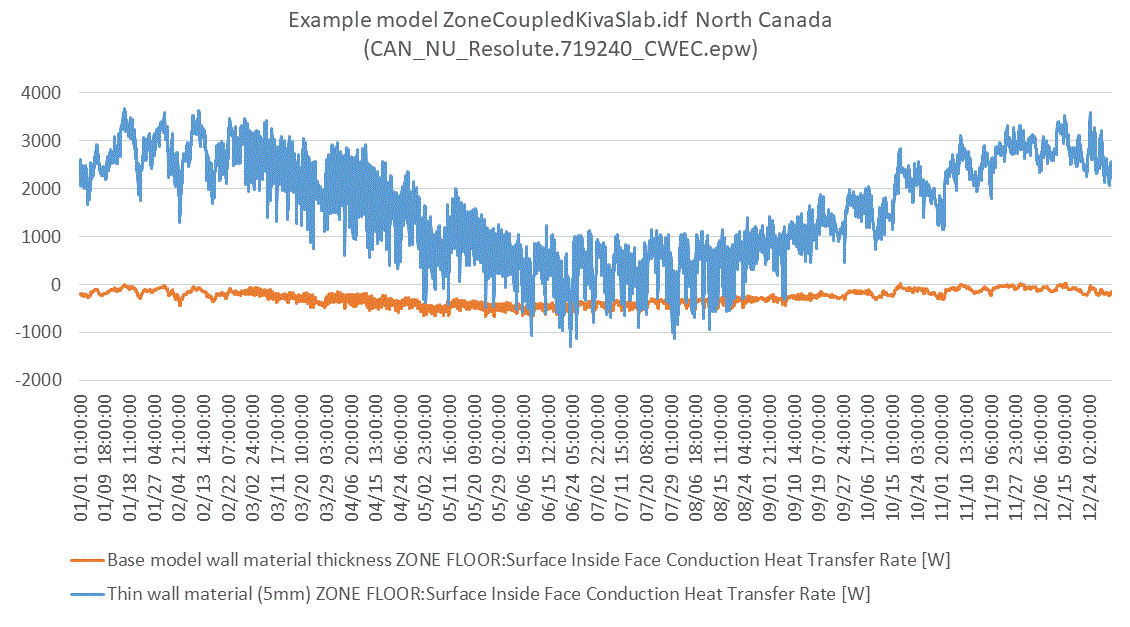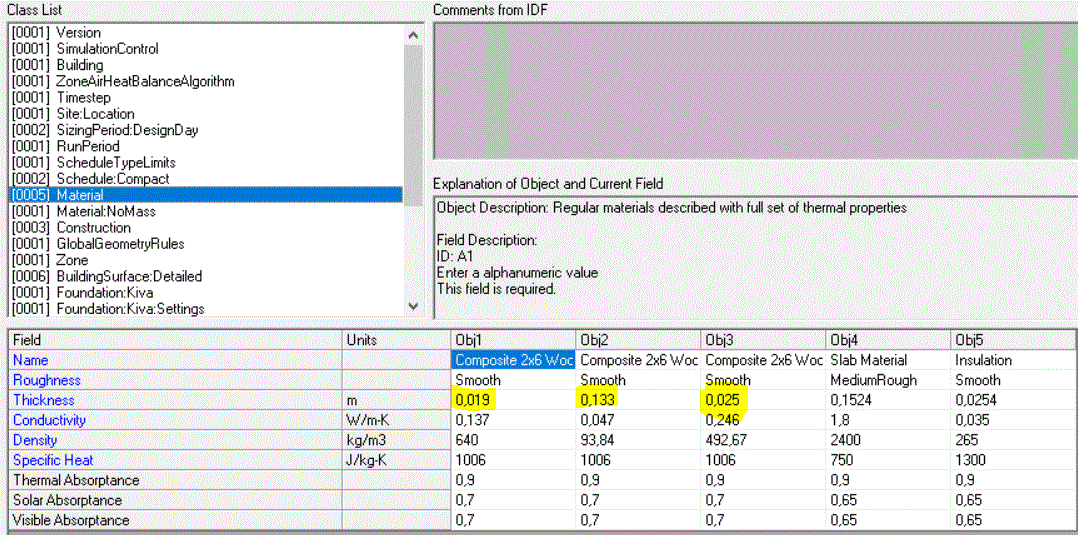Thermal performance of tents- What is the best way of ground modelling?
I use EnergyPlus 9.0.1. I want to model the thermal performance of a tent. The tent doesn’t have any floor insulation. The floor is a kind of plastic foil. Moreover, I don’t have any information about the ground type. My question is- what is the best way to model the ground? I have done research on that and I understood that there are a few methods of ground-coupling modelling: 1. Simple method- assigning ground-contact surfaces to the ‘ground’ outside boundary condition and add the Site:GroundTemperature:BuildingSurface object. 2. Slab preprocessor 3. Site:GroundDomain:Slab object in EnergyPlus 4. Foundation:Kiva object in EnergyPlus.
Which method is the most suitable for me? And actually is there any difference between the slab preprocessor and the Site:GroundDomain:Slab object integrated with EnergyPlus?
Thank you in advance for any help.
EDIT
I performed a simulation of a tent using Kiva for the extremely cold climate in Canada (weather file CAN_NU_Resolute.719240_CWEC.epw). The tent was heated to the heating setpoint temperature of 15°C. I checked the heat transfer rate through the tent’s floor (1-inch layer of soil). And the results were opposite to my expectations. The results showed heat gains through the floor. I thought that maybe I made a mistake in my model so I did a test with the example model ZoneCoupledKivaSlab.idf. I run the simulation for the same weather file and I obtained heat losses through the floor (according to expectations). After that, I slightly modified the example model by changing only the wall materials’ thickness from the initial values to 0.005 m (Composite 2x6 Wood Stud R19 #1, Composite 2x6 Wood Stud R19 #2, Composite 2x6 Wood Stud R19 #3). I didn’t change the floor/slab construction. I simulated the model again and I obtained completely different results- heat gains from the ground (similarly to my tent model). I attached a chart showing the results. Could you please explain to me this outcome?








What wall construction are you changing? The foundation wall, or the above grade walls?
The only thing that I changed are the materials' thicknesses, please have a look at the picture above (yellow highlights). I changed them for 0.005m.
Here's what I believe is happening: When you make the walls very thin, their interior surface temperature drops very close to the outdoor temperature. The heat flow from the slab is now driven by radiation to the surrounding walls instead of through the (mostly) warmer ground. The way the convection, radiation, and conduction balance at the surface is such that the conduction is now flowing into the space.